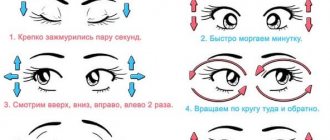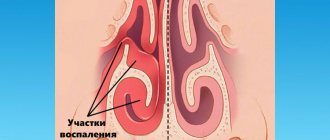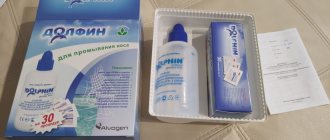- Swelling of the mucous membrane, indicating the presence of inflammation in the tissues;
- The production of abundant mucus (snot), with the help of which pathogenic infectious agents (microorganisms) and their decay products are removed from the passages.
Congestion is caused by both factors.
Due to edema, a mechanical narrowing of the lumen of the passages occurs. Due to abundant mucus - their blockage. In some cases, nasal congestion without runny nose (discharge) is noted in the first days of the development of acute respiratory infections. Mucus has not yet begun to form during this period, but after 2-3 days the clinical picture becomes classic - with snot, headache, congestion, and fever. Nasal congestion without runny nose (discharge) for a long time indicates the presence of another disease that requires timely diagnosis and targeted therapy.
Many causes of nasal congestion without runny nose (discharge) have been identified. The most common of them:
- Deviation of the nasal septum that occurs for any reason (post-traumatic, congenital, as a result of a previous illness). Difficulty breathing may be permanent or occur periodically;
- Excessively dry air, leading to drying of the mucous membrane. A patient with allergic, infectious rhinitis develops typical swelling of the mucous membrane, but the mucus itself (snot) instantly dries up, erasing the classic clinical picture. A similar phenomenon is often observed with the development of sinusitis, including sinusitis and frontal sinusitis;
- Trauma and foreign body in the lumen of the passage. Edema develops as a reactive response to irritation when the mucous membrane comes into contact with a foreign body or to a septal fracture;
- Drug-induced rhinitis is a response to the abuse of vasoconstrictor drugs (drops, ointments);
- Changes in hormonal status, observed more often in pregnant women and nursing mothers. If a pregnant woman comes to our clinic with such complaints, we can confidently say that this is a symptom of steroid metabolism disorders. In rare cases, dryness of the mucous membrane is associated with the progression of endocrine diseases, for example, diabetes, leading not only to hormonal imbalance, but also to metabolic disorders;
- The development of localized rhinitis in the posterior parts of the nasopharynx, in which the resulting discharge is swallowed and is not released;
- Polyposis is the proliferation of benign neoplasms that mechanically narrow the lumen of the nasal passages;
- Adenoids and other pathological processes in the pharynx.
Whatever the reasons for nasal congestion without runny nose (discharge), the patient is advised to immediately undergo an examination by an ENT doctor to establish a reliable diagnosis and prescribe targeted therapy.
Why is my nose stuffy?
Nasal congestion is a problem that every person faces.
Regardless of the cause that caused this disease, it causes constant discomfort, sharply reducing the quality of life for a number of subjective reasons: pain in the head appears, breathing through the nose is difficult, sleep is disturbed. As a result of impaired breathing through the nose, the following symptoms may be observed: rapid fatigue of the body, everyday weakness, decreased performance, all this indicates an insufficient supply of oxygen to the brain. There are plenty of methods for treating this disease today, but before starting treatment it is worth identifying the cause that caused nasal congestion.
Causes of nasal congestion
The causes of difficulty breathing through the nose can be varied: both the common cold (ARVI) and a malignant tumor. In addition, the cause may also be congenital characteristics that contribute to congestion.
Diagnostic measures
Diagnosis and treatment of the nose in adults is carried out by an otolaryngologist. During the consultation, the ENT doctor pays great attention to collecting complaints and the patient’s life history. During the consultation, the doctor asks the patient about when the symptoms appeared, whether they were preceded by injuries, whether he suffers from chronic diseases, whether he recently suffered from infectious diseases, etc.
A direct examination of the nasal cavity begins with rhinoscopy, which allows you to determine whether there is swelling, whether there is a foreign body in the nasal passages, or helps to identify abnormalities in the structure of the nasal cavity.
Endoscopic examination allows you to see a complete picture of the nasopharynx.
Thanks to it, the doctor examines in detail those areas of the nasal cavity that cannot be seen during a classic examination.
At this stage, neoplasms and adenoids can be identified. If necessary, the patient is sent for an X-ray or MRI. You may also need to consult related specialists - an allergist, cardiologist, oncologist.
Correct diagnosis is possible only after all diagnostic measures have been carried out. After this, a treatment regimen is prescribed.
Nasal congestion in children
Children suffering from nasal congestion experience difficulty breathing, which may be the result of colds, hypothermia, upper respiratory tract infections, or allergic reactions such as hay fever.
Similar symptoms:
- Impaired air flow in both nostrils;
- Labored breathing;
- Increase in general body temperature;
- The child is capricious, irritable;
- Sniffling and sniffling;
- Sleep disturbance;
- The child often rubs his nose;
- Other cold symptoms: sore throat, cough.
The problem of nasal congestion in children, according to world literature, has increased several times over the last century - from 10% to 30%, and leads to a significant decrease in the quality of life, and in severe cases, difficulty in nasal breathing creates problems in the child’s education.
The main cause of nasal congestion in children is a deviated nasal septum and inflammation of the mucous membrane . Allergies and viral-bacterial infections can also be the initiator of the onset of symptoms. A constantly stuffy nose causes a feeling of discomfort and can also provoke various complications, for example, impaired hearing. The cause of chronic nasal congestion in children is adenoids, acute and chronic inflammation in the paranasal sinuses (sinusitis).
There can be many reasons for difficulty in nasal breathing in children, and in each individual case, the ENT doctor has to identify the factors that cause constant or periodic congestion in the child. First of all, it is worth eliminating the most possible and significant causes of nasal congestion in children, namely: allergic rhinitis, rhinitis, sinusitis and adenoid hypertrophy.
What happens in the nose, and what consequences can there be?
Nasal congestion without snot means that the mucous membrane covering the inside of the nasal passages is in an inflamed and dry state. Receptors can be irritated by a variety of factors. Inflammation causes blood to flow to the mucous membrane, causing swelling and nasal congestion.
If you do not pay attention to the problem for a long time, atrophic rhinitis may occur when the mucous membrane dries out and ceases to perform its key functions.
Stuffy nose but no runny nose?
The most common reason for a stuffy nose without a runny nose is a complication of rhinitis (sinusitis - inflammation of the mucous membrane of the sinuses), in children it is usually caused by various modifications of rhinitis:
- Chronic allergic rhinitis appears throughout the year. This reaction is caused by household allergens: dust, wool, fluff. When walking outside, the child’s condition noticeably improves, breathing becomes free. This type of nasal congestion without a runny nose can be easily cured; it is only necessary for an allergist to identify and determine the culprit allergen;
- Infectious rhinitis all year is a complication resulting from acute viral rhinitis. In this case, an immunologist will help you, who will determine the microorganism that caused the disease and select the necessary set of drugs;
- Seasonal allergic rhinitis can also cause nasal congestion without a runny nose. This happens at the same time of year, which is caused by the flowering of certain plants. This type of runny nose can be treated in the same way as year-round allergic rhinitis.
Dry air: how does it bother children? If you don’t want to get sick, humidify the air!
REDUCES IMMUNITY
The mucous membranes of the nasal cavity are our first and very important barrier to bacteria and various viruses. It is the nasal mucosa that every second comes into contact with a huge number of different microbes, but since mucus is constantly formed in the nose, it prevents them from entering the child’s body. This ability of the mucous membranes is called local immunity. But the nasal mucosa can protect against infections only if it is well moisturized, and if the nose dries out, the work of local immunity is disrupted. Then bacteria and viruses easily overcome the protective barrier of weakened local immunity, and the likelihood that the child will get sick upon contact with the infection immediately increases. So the main enemy of local immunity and one of the reasons that a child often gets sick is dry air.
PROMOTES ALLERGIES
And dry air in the house is very harmful for children prone to allergic reactions. Not only does the mucous membrane of the nose and mouth dry out, causing the body to immediately become more susceptible to various allergens, including dust. Also, the dust itself in rooms where the humidity is very low practically does not settle, but constantly hangs in the air. Plus, it also adds animal hair, plant pollen, small particles from clothes, and any household items in the house. And the child constantly inhales all this. If the air had normal humidity, dust and other allergens would settle on the floor faster and the baby would not breathe all sorts of nasty things.
DOESN'T ALLOW YOUR NOSE TO BREATHE
If the air in the house is too warm and dry and the mucous membranes dry out, then the body must somehow respond to this. His first reaction is that the nasal mucosa secretes secretions to protect itself from drying out. But since the air is constantly dry, the nose begins to secrete more and more secretions - as a result, a runny nose or nasal congestion appears. Moreover, there may not be so-called snot - the child simply either “grunts” his nose all the time, or sniffs it. There may be another situation: at some point the mucous membrane dries out completely, crusts form in it, which clog the nose even more. By the way, babies already have narrow and short nasal passages, and if swelling, congestion or dry crusts are added to them, then it becomes even harder for the child to breathe.
INTERFERES WITH SLEEPING AND ENJOYING LIFE
The drier the air, the less oxygen it contains, but it is needed for the active functioning of our entire body and especially the brain. Lack of oxygen (hypoxia) primarily affects the nervous system. An adult often begins to have a headache, concentration decreases, and fatigue increases. Due to lack of oxygen, young children become more irritable, more often capricious and sleep worse. So the child may not be crying because of teeth or a magnetic storm, he is simply being affected by hypoxia. In addition to the lack of oxygen, difficulty breathing due to dry mucous membranes is added - this is why the baby is either restless in his sleep, or wakes up all the time, or cannot fall asleep for a long time. And very often a child drinks water or milk at night not because he is hungry, but simply because his mouth is dry.
INTERFERES WITH EATING
How do babies eat? They suck on their mother's breast or bottle, which means their mouth is always busy. Try sucking on something if your nose is stuffy, has dry crusts, or even snot. The baby begins to suck, and is forced to stop all the time, because you also need to breathe. And the mother does not understand why the baby suddenly lets go of the breast, then pounces on it again. She thinks that the problem is with her (the breast does not give properly or the shape of the nipple is not the right one), or even begins to fear that she does not have enough milk. It’s simple: the child’s nose is either dry or clogged with something.
WHAT TO DO
A child feels most comfortable at a temperature of 20–22 °C (and some children even at a temperature of 18–20 °C) and air humidity of 50–70%. But in winter, when the batteries are working at full capacity, the temperature in the house reaches 25–28 ° C, and the humidity drops to 20%. You can find out about this if you buy a thermometer along with a hygrometer: they will show both the temperature in the room and its humidity. To create the right microclimate in a room, you need to:
– Do a wet cleaning in the baby’s room at least once a day (just wash the floor; it’s not so much about cleanliness as it is about moisturizing the house).
– Ventilate the room at least 4–6 times a day for 10 minutes. If there is frost outside, this will not increase the humidity (at low temperatures the air outside is also usually dry), but it will add oxygen.
– If the batteries are regulated, do not turn them on at full power.
– Buy a humidifier and use it regularly. If this is not possible, then you need to humidify the air in the house using folk remedies: hang wet towels near the heating radiators (it doesn’t work for long, but it’s at least something); place wide containers of water near the battery; just constantly spray clean water from a spray bottle.
– Moisten the baby’s nose with pharmaceutical saline solutions or breast milk. Soften the crusts in the nose and remove them.
Neither a fashionable immunostimulant, nor the most modern vitamins, nor even fresh air itself will make a child healthy if he lives in a house with very low air humidity. So it’s worth finding the time and a way to create the right microclimate around your baby.
Treatment of nasal congestion
To successfully treat nasal congestion, you must initially establish the cause itself , and for this it is necessary to examine the ENT organs using mesopharyngoscopy, anterior rhinoscopy, and otoscopy. There are cases when, to clarify the localization of inflammatory processes, an X-ray examination of the paranasal sinuses (computed tomography) is necessary.
Ours uses an original, effective method for treating nasal congestion, which achieves complete sanitation and restoration of the mucous membrane of the upper respiratory tract. The cause of difficulty in nasal breathing is quickly eliminated, without the need for surgical methods.
Almost all diseases of the ENT organs, with the exception of anatomical anomalies, are the same disease, the only difference being the stage of progression. And the trigger for all such diseases, most of which are marked by nasal congestion, involves an infection that has penetrated the mucous membrane of the respiratory tract and leads to degenerative transformations of the mucous membrane, and also leads to a decrease in local immunity.
The most effective non-surgical way to treat nasal congestion, as well as other infections of the ENT organs, is the sanitation and restoration of the mucous membrane, which helps normalize nasal breathing, which has been successfully achieved for many years using the methods used in our center.
2. Diagnosis of difficult nasal breathing
To take measures to restore nasal breathing, a thorough diagnosis
, which always includes a conversation with the patient. It is necessary to try to find out how long the respiratory pathology lasts, assess the severity and severity of the disorder, identify events preceding difficult nasal breathing, and hereditary factors.
Also, to prescribe adequate treatment, the doctor can use:
- palpation,
- inspection,
- radiography,
- computed tomography,
- pneumatic rhinomanometry.
Visit our Therapy page
Prevention
Prevention of nasal congestion comes down to a number of general measures:
- Hardening the child (contrast water procedures).
- Do not allow the child to become hypothermic.
- Avoiding contact with various types of irritants (dust, tobacco smoke, gas).
- For frequent nasal congestion, rhinitis, and acute respiratory infections, in order to increase local immunity, take the immunostimulating agent IRS19 (for children over 3 years of age).











